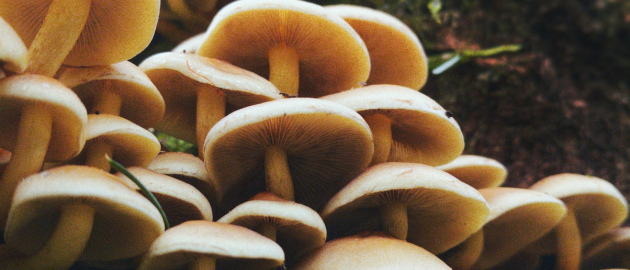What does our microbiome have to do with it?
Our understanding of obesity and the physiological underpinnings of why some people become obese, while others do not, has evolved significantly. A current focal point of understanding why, is the microbiome. The microbiome is the collective genome of the microbiota within our bodies which are “the ecological community of commensal, symbiotic and pathogenic microorganisms that literally share our body space.”
It is estimated that the human body contains over 750 trillion microbial cells, which is over 10 times more cells than the body itself.1 The National Institute of Health established the Human Microbiome Project in 2008 with landmark papers published in 2012.2 As this work and research continues to progress, we gain insight and specific evidence into how an individual’s microbiota balance can influence their health on many levels.
One area receiving a significant level of investigation is, if and how this balance can affect and/or causes weight gain and obesity.
Metabolic syndrome, diabetes and obesity are at epidemic levels, with over 67% of adults and 33% of children being overweight or obese (33% and 17%, respectively, being in the obese category).3
The truly tragic aspect to this statistic is that it is from 2010 data, and the obesity problem in the United States has only gotten worse since that time. The vast significance of this problem requires a better understanding of the underlying “why” of this epidemic. The number of people who eat less and more healthy, combined with increased activity and exercise, but fail to lose weight is staggering; leading us to think perhaps the old “calories-in, calories-out” model of weight loss has serious flaws.4
Bacteria and the digestive tract
The complexity of the human body and its symbiotic nature with the microbiome point to potential areas of investigation to further understand why so many struggle with weight gain and obesity. A particular point of interest is the digestive tract, in which a tremendous number of microbiota reside, is responsible for the breakdown and absorption of nutrients. The bacteria living within our digestive tract are largely responsible for our ability to extract energy from the food we eat.
What if I told you that if certain bacteria become out of balance, the energy extracted from food can result in increased fat storage? Sound crazy? Well, mounting evidence supports this thought, identifying specific biochemical changes which may be targets in the fight against obesity.
Bacteroidetes and firmicutes
In order to understand specific aspects of why the microbiome may be intimately linked to an individual’s overall weight. Once you understand the foundation of the problem, the solutions essentially seem like common sense. You likely have not heard of Bacteroidetes and Firmicutes, but they are interesting little bugs and principle residents of our digestive tract.
These gut microbes (amongst many others) are responsible for:
- Polysaccharide breakdown
- Nutrient absorption
- Inflammatory responses
- Gut Permeability
- Bile acid medication
Many studies elucidate that disruption in the relative proportions of these microbial populations may affect the above mechanisms and ultimately contribute to weight gain and directly influence insulin resistance, which can lead to the development of diabetes.5
Microbial disruption
Microbiome balance can be changed by any number of factors as the microbes co-develop with their human “host.” This balance can be strongly influenced by:
- Mode of birth (vaginal delivery or c-section)
- Diet and nutrition (from birth to today)
- Environmental exposures
- Antibiotic exposure (through diet or prescription)
- Genetics5
Researchers found that when comparing lean vs. obese humans (and rats), there is an association of fewer Bacteroidetes and more Firmicutes in the obese and overweight populations. This suggests that a varied bacterial composition of the digestive tract alters the ability to extract calories from ingested food.6 This is significant in explaining why calorie intake reductions do not always result in weight loss, or why two similar people can eat the same food and one person becomes overweight, while the other stays lean, even when all else remains equal.
Another very interesting aspect of microbiome balance is its influence over insulin resistance. (So here is where we are going to geek out a bit.) As Firmicutes increase with a decrease in Bacteroidetes there is an interference with intestinal permeability (also known as Leaky Gut). The resultant increase in lipopolysaccharide (LPS) absorption initiates the activation of Toll-like receptor (TLR) 4 and 2 and LPS receptor CD14, which all increases the activation of inflammatory pathways resulting in the formation of cytokines and chemokines. The resultant increase in inflammatory molecules disrupts and inhibits several aspects in the phosphorylation of the insulin receptor. This pathway can also be disrupted through endoplasmic reticulum stress activation, which can be caused by chronic overeating and positive energy balance.7
So what does all this mean, you ask?
Well as the bacterial balance of our digestive tract changes, the lining of our digestive tract breaks down. This results in molecules of inflammation which make it difficult for the body to appropriately signal receptors to respond to the presence of insulin, ultimately needing increased levels of insulin to get the same end result (akin to yelling to a friend in a loud public space). Additionally, when we overeat, our endoplasmic reticulum gets stressed and activates a pathway which disrupts the appropriate signaling of insulin as well.
Maintaining balance in your gut
As you read, you likely see the importance of supporting a healthy balance within the digestive tract. With the onslaught of factors experienced in daily life, one can assume that their gut could use a little bit of help to maintain a healthy, vibrant environment, especially at this time of year. Almost all people could benefit from the use of a Synbiotic (a probiotic + prebiotic blend), which has been shown to reflect and support the composition of a healthy intestinal environment. A safe and highly effective type of product which has a growing body of evidence to support its use, is based on soil based organisms and how our gut co-evolved with their help.8 Implementing this type of product without the need for expensive testing of overall digestive function is very safe, but if for some reason you are not achieving the results you had been hoping for, more in depth testing and evaluation is available from individuals well trained in the functional assessment of the digestive tract.
A major challenge with working off assumptions is the complex nature of the body. In weight gain, there is a high likelihood that microbiota imbalance exists, yet other factors could also contribute to the problem. It is very easy to move forward with a safe intervention right away, but in certain cases it is more important to know (with as much certainty as possible) why someone has gained weight or is having a hard time with losing it. A very powerful test to understand the microbial balance in the digestive tract is through a stool examination. Much information is gleaned with this test, but one which is very valuable is to see the Bacteroidetes and Firmicutes balance. Successive testing can demonstrate that the intervention or collection of interventions you have chosen are, in fact, working.
Couldn’t I just eat less?
In sum, no. As humans, starvation poses a great threat to our existence (far more so than overabundance) so our biological systems have evolved to protect against weight loss far better than against weight gain. As the availability and energy density of food has increased, it introduced an era of overabundance which our bodies are not equipped to handle. This increase in available energy combined with factors which modify the delicate microbial balance of the digestive tract we have a perfect storm for a rampant increase in weight gain and obesity.
We are starting to understand the specific mechanisms through studies with rodent models, but full scale human studies are still needed before we will fully understand the specific action the bacteria within the microbiome have upon overall human health.
With piling evidence to support the fact that a dysregulated microbiome contributes to weight gain and obesity, we are more sure than ever that doing what you can to balance the bacteria within your gut is a critical component in any plan to support weight loss.
About the Author:
Kathryn is a functional nutritional therapist, author, editor, and mama of two boys. She enjoys spending her free time out in nature-hiking and fishing. You can find her at www.primalmusings.com and her book “Forties on Fire” can be found on Amazon.
References
- 1. Wikipedia. (2015). Wikimedia Foundation, n.d. Web.
- 2. The Human Microbiome. (2015). Human Microbiome RSS, n.d. Web.
- 3. Overweight and Obesity Statistics (2012). Overweight and Obesity StatisticsWeb.
- 4. Gunnars, Kris (2013). Debunking the Calorie Myth — Why.RSS 20. N.p.
- 5. Barlow, G. M., Yu, A., & Mathur, R. (2015). Role of the Gut Microbiome in Obesity and Diabetes Mellitus.Nutrition in Clinical Practice, 0884533615609896–. doi:10.1177/0884533615609896
- 6. DiBaise, J. K., Zhang, H., Crowell, M. D., Krajmalnik-Brown, R., Decker, G. A., & Rittmann, B. E. (2008). Gut Microbiota and Its Possible Relationship With Obesity. Mayo Clinic Proceedings, 83(4), 460–469. doi:10.4065/83.4.460
- 7. Caricilli, A., & Saad, M. (2013). The Role of Gut Microbiota on Insulin Resistance.Nutrients, 5(3), 829–851. doi:10.3390/nu5030829
- 8. Hong, H. A., Duc, L. H., & Cutting, S. M. (2005). The Role of Gut Microbiota on Insulin Resistance.Nutrients, 5(3), 829–851. doi:10.3390/nu5030829












